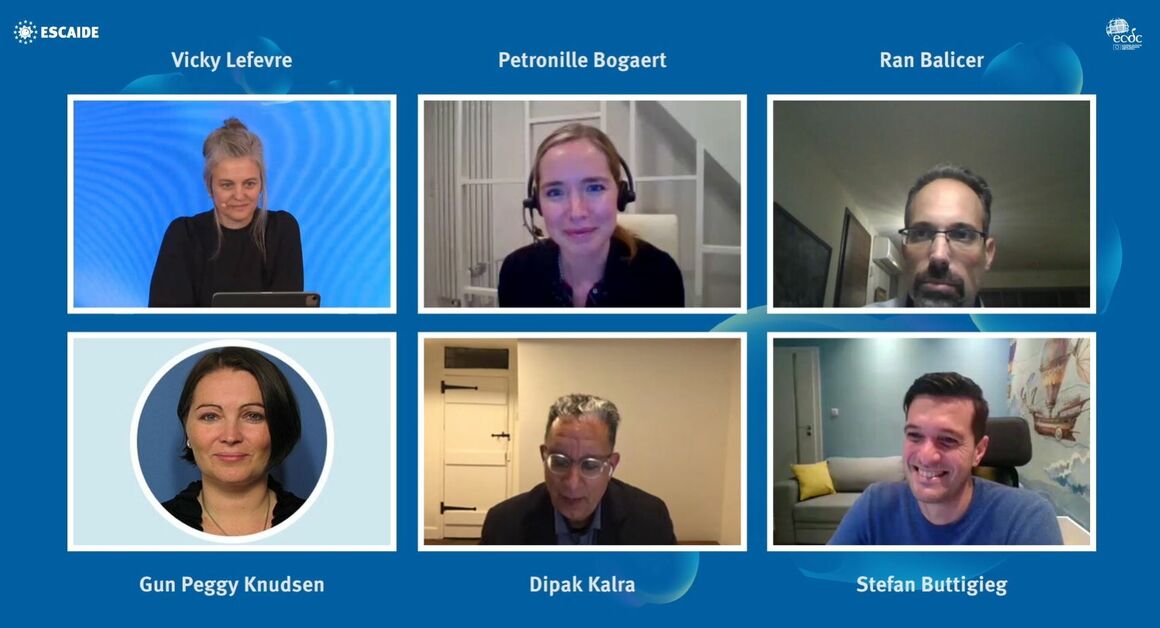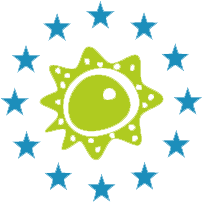ESCAIDE 2021 – a summary of Day 2
View the written summary of the second day of ESCAIDE 2021, covering the main highlights, sessions and plenary.

The first plenary session of the day – “Modelling epidemics in real time: coming of age?” – showcased the incredible advances in the field of infectious disease modelling, while not shying away from acknowledging the many limitations and challenges that are still to be overcome. The session was chaired by Bruno Coignard (Santé publique France), Magdalena Rosińska (NIPH-NIH, Poland) and Adam Roth (ECDC), and they were joined by three fantastic speakers, all modellers, who at the start of this pandemic suddenly found themselves in an unprecedented spotlight with direct lines to prime ministers or to heads of intergovernmental agencies. The session covered three key themes: the contribution of modelling to understanding diseases and disease forecasting, the challenges surrounding data generation for modelling, and modelling and policy making. The speakers stressed the need to temper the wildly enthusiastic view of modelling that this pandemic has awakened the world over, emphasizing instead the true strengths of modelling and the need to keep in mind what models can and cannot do, that they should form a component of a holistic decision-making approach, and that a model is only ever as good as the data underlying it.
"A major innovation during the #COVID19 outbreak was the use of several data streams, and integrating all of these data streams in one mathematical model" – Niel Hens, Belgium, in Plenary B
The day then continued with poster tours and fireside sessions. These ranged in topic from food and waterborne disease outbreaks through digital health to field epidemiology – the ‘field’ being a sauna in one memorable study! In the session on food and waterborne disease outbreaks, a salmonella outbreak due to consumption of a traditional Sudanese raw lamb dish (Marraru) served in Eid al-Adha highlighted the importance of tailoring health protection messages and interventions to meet the specific needs of communities and traditional methods of preparing food. An abstract session on digital health for COVID-19 focussed on novel ways to identify cases, outbreaks and exposures, trace transmission, and investigate hotspots and their added value to tackling the COVID-19 pandemic. This session dealt with the dilemma of the high added value to health authorities of having detailed real-time data when forming an appropriate response, and the potential privacy issues surrounding the collecting of such highly personal data.
The theme from this last fireside session was continued and elaborated upon in more depth in Plenary C where we heard stories from speakers who have pioneered digital technologies for public health solutions – who reflected on how digital health is not a future possibility, it is here and now and should be made accessible. The session was a discussion of the expected benefits of greater integration of digital health in public health, and of the main challenges and concerns. A key feature was the necessity to build trust with the public; the speakers reflected on the results from audience polls and gave concrete examples of how we can improve trust in data usage by stating the purpose, which parties can access data, keeping data protected and ensuring that the public hear about the health advances that have been made as a result of their data being used.
Key examples of digital technologies included the effective large-scale data usage in Israel for proactive care by analysing health records and using AI to detect those at risk of certain conditions, before they show signs of illness, to implement early interventions and save lives and resources. This had been translated for use during COVID-19 – in March 2020 individuals were identified as being high-risk and encouraged to take extra precautions including receiving remote medical care. It was also used to offer early antibody treatment for COVID positive patients who show risks of developing severe disease.
"We know that the Smitesstop app is running well, and that the data protection is so high, that we will never actually know who and how many people were alerted. But it is meant to break infection chains" – Gun Peggy Knudsen, Norway, on how data privacy means we can’t know the true impact of COVID-19 contact tracing apps, in Plenary C
The panellists concluded that the digital technologies (platforms and apps) generated during the coronavirus pandemic are not the persistent value – instead the learnings we have gained from their development and how to interact with the public to build trust, to integrate digital technologies into health care in wider settings and future crises, are the true gains made.
The day ended with a collegial session on gathering information on non-pharmaceutical interventions (NPIs) in response to the COVID-19 pandemic, where different research groups shared lessons, knowledge and experiences in a panel discussion.
